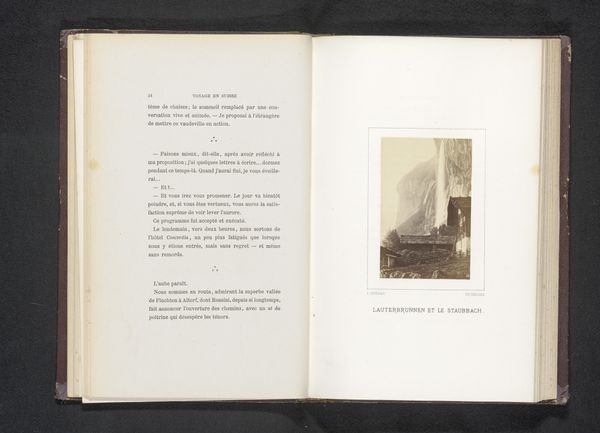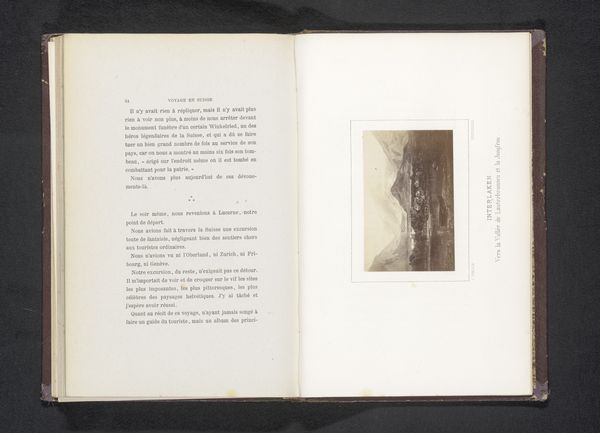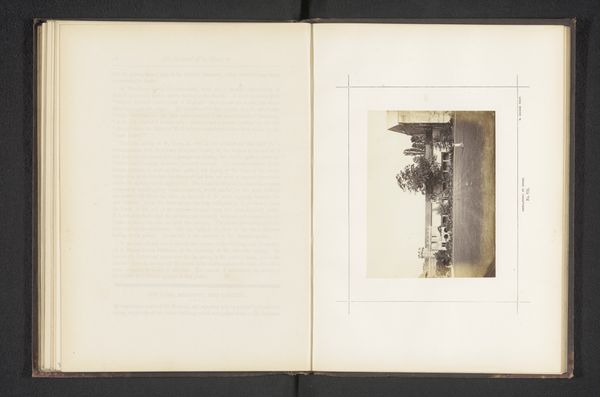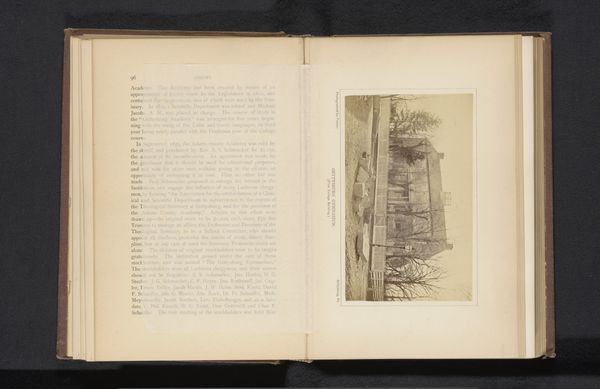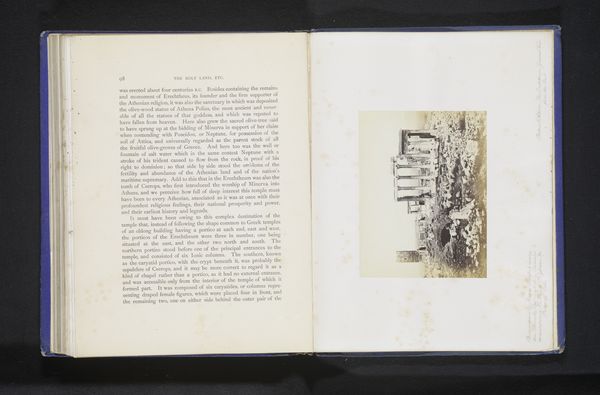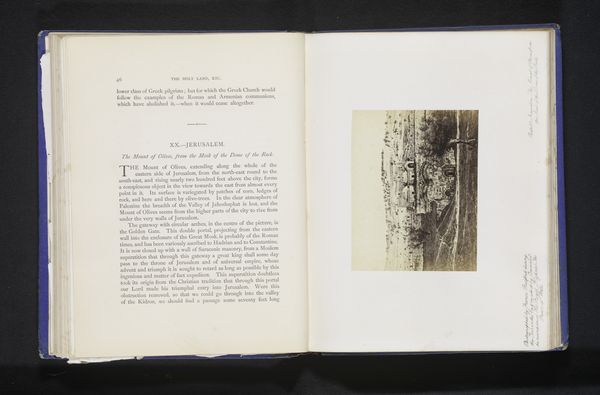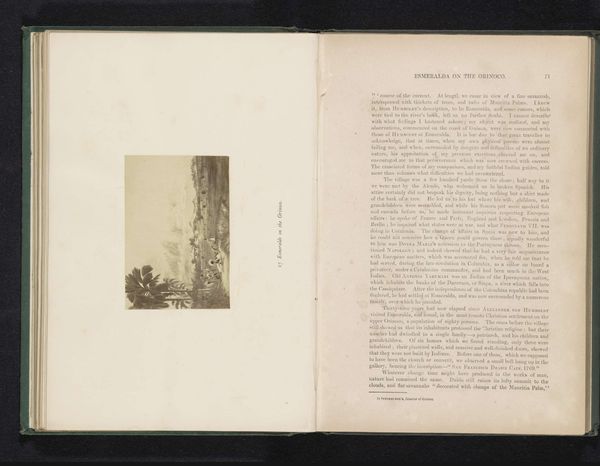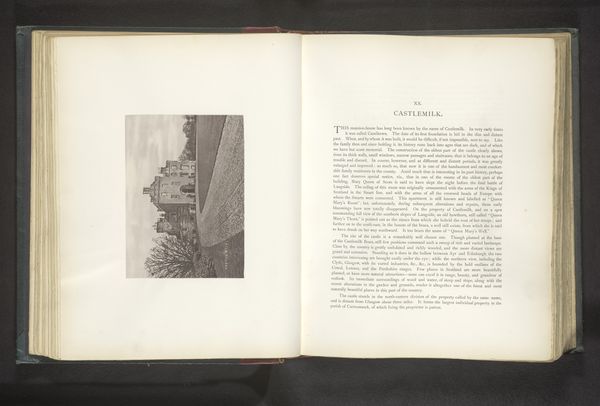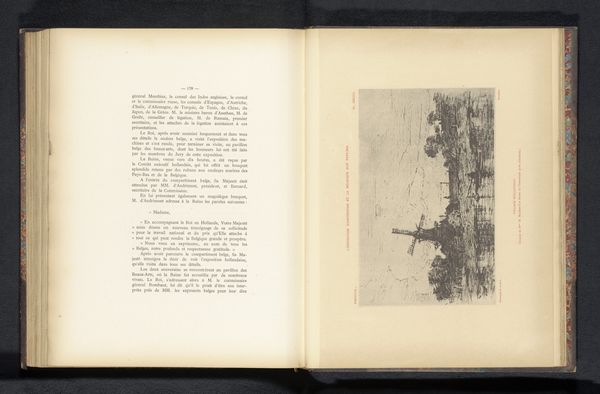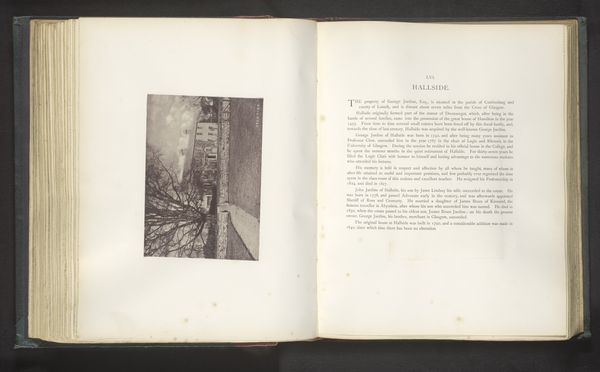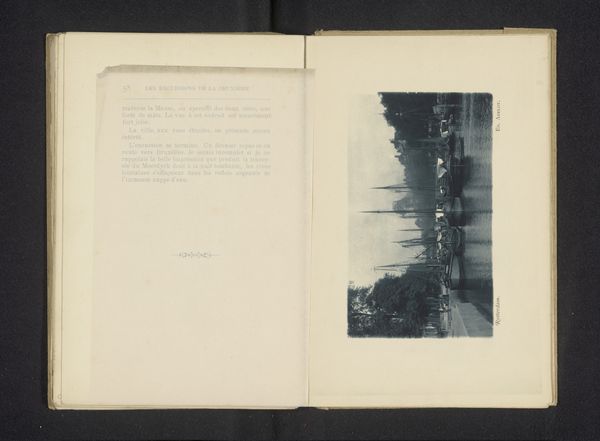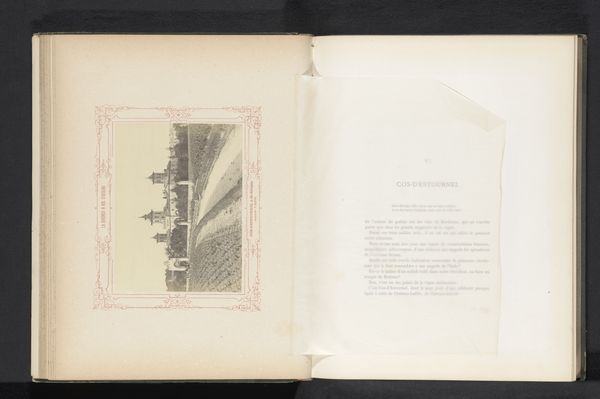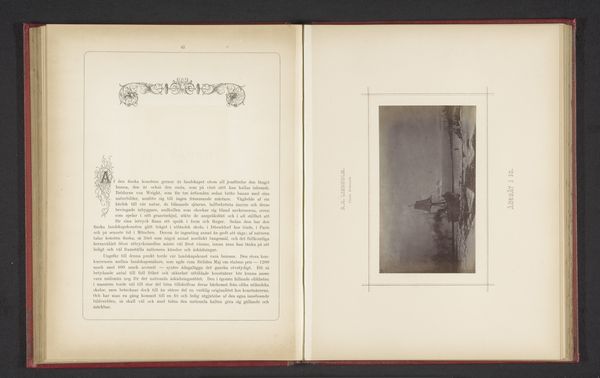
#
type repetition
#
aged paper
#
homemade paper
#
paper non-digital material
#
paperlike
#
typeface
#
paper texture
#
fading type
#
folded paper
#
thick font
Dimensions: height 87 mm, width 56 mm
Copyright: Rijks Museum: Open Domain
Curator: Materially speaking, this book containing Louis Ghémar's "Gezicht op Grindelwald," created before 1868, presents us with a fascinating intersection of text and image on aged, possibly homemade paper. What strikes you most about this piece? Editor: I'm intrigued by the contrast. The left page has dense, faded text, while the right features this sepia-toned photograph. I’m wondering about the choice to combine them so directly. What can we infer about it? Curator: Considering the age of the book and the integration of a photograph directly onto the page, it challenges a rigid hierarchy between literary work and reproductive technology, wouldn’t you agree? Think about the labor involved: from the paper production, potentially a localized or craft endeavor, to the printing press and photographic process. What does that imply for how knowledge about this landscape, Grindelwald, was being consumed at the time? Editor: That’s interesting! So it's not just about the image itself, but about the labor and means that went into producing this very specific combination of image and text. Curator: Precisely! Consider also the economic implications of such a production. The materiality tells a story about accessibility, consumption, and the evolving relationship between artistic representation, industrial processes, and perhaps a growing tourist industry hungry for visual representations of this exotic destination. Editor: I never would have considered all those different aspects when I first looked at the image! It really changes my perspective on how I perceive the object itself, rather than just the landscape it depicts. Curator: Indeed. Focusing on the materials and modes of production gives us invaluable insight into the piece’s meaning. It underscores how art objects are not born in a vacuum.
Comments
No comments
Be the first to comment and join the conversation on the ultimate creative platform.
